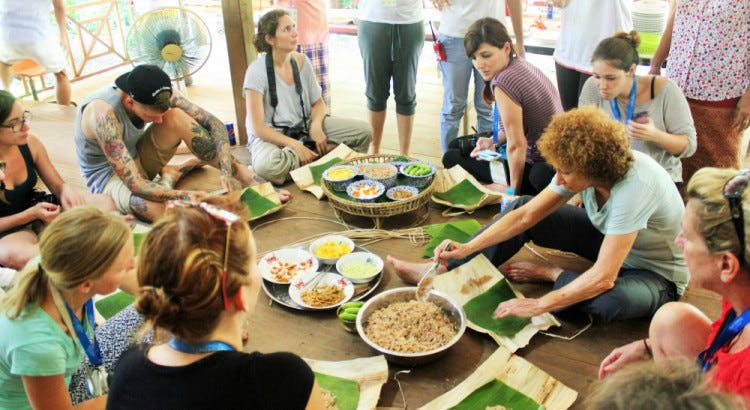In recent years, travelers have shifted their focus from conventional tourism to more meaningful and immersive experiences. One emerging trend that is making a significant impact is community-based tourism. This form of travel allows visitors to engage with local communities, experience authentic cultural practices, and contribute directly to the well-being of local residents. Unlike mass tourism, which often leads to overcrowding and environmental degradation, community-based tourism emphasizes sustainability, cultural preservation, and economic empowerment.
Understanding Community-Based Tourism
Community-based tourism (CBT) is a travel model where local communities actively participate in and benefit from tourism activities. Instead of relying on large corporations, CBT encourages small-scale tourism businesses run by local residents. This approach ensures that economic gains stay within the community, enhancing livelihoods and fostering sustainable development.
One of the defining characteristics of CBT is the personal interaction between tourists and the host community. Visitors can stay in homestays, take part in traditional crafts, and explore landscapes with local guides. This model provides an authentic experience while respecting the environment and local customs.
Economic Benefits of Community-Based Tourism
A significant advantage of community-based tourism is its ability to create economic opportunities for local populations. Unlike conventional tourism, where profits are often absorbed by international corporations, CBT ensures that financial benefits remain within the community. This revenue can be used to fund local projects such as schools, healthcare services, and infrastructure improvements.
Moreover, CBT provides employment opportunities for locals, from tour guides and artisans to homestay operators and cultural performers. By giving community members a direct role in the tourism industry, CBT reduces economic disparities and fosters financial independence.
Cultural Preservation and Authentic Experiences
One of the most appealing aspects of community-based tourism is its ability to preserve cultural heritage. Many communities have unique traditions, languages, and artistic expressions that are at risk of disappearing due to modernization and globalization. CBT allows these communities to showcase their heritage while ensuring its continuity.
For example, visitors can participate in traditional cooking classes, witness indigenous dance performances, or learn about ancient farming techniques. These experiences provide an educational element to travel while allowing local traditions to thrive. By engaging in CBT, tourists help reinforce cultural pride and encourage younger generations to keep their traditions alive.
Environmental Sustainability in Community-Based Tourism
Sustainability is a core principle of CBT. Unlike mass tourism, which often leads to environmental destruction, CBT promotes responsible travel practices. Many community tourism initiatives include conservation efforts such as reforestation, wildlife protection, and waste management programs.
Eco-lodges, for instance, are a popular accommodation choice in community-based tourism. These establishments use sustainable building materials, renewable energy, and organic farming techniques. By supporting such initiatives, travelers can minimize their ecological footprint while contributing to conservation efforts.
Additionally, local guides educate tourists on responsible tourism practices, such as respecting wildlife, reducing plastic waste, and supporting fair-trade products. These small yet impactful actions help preserve natural landscapes for future generations.
Challenges in Implementing Community-Based Tourism

While community-based tourism offers numerous benefits, it also faces certain challenges. One of the main obstacles is the lack of infrastructure and resources in many rural or remote communities. Poor transportation networks, inadequate lodging facilities, and limited access to technology can hinder tourism development.
Another challenge is ensuring that CBT remains ethical and does not exploit local populations. Some tourism projects risk commercializing indigenous cultures in a way that distorts or devalues traditions. Therefore, proper training and ethical guidelines are crucial to maintaining the integrity of CBT initiatives.
Government support and collaboration with nonprofit organizations can help communities overcome these challenges. Investments in infrastructure, training programs, and marketing strategies can enhance the effectiveness and sustainability of community-based tourism.
How Travelers Can Support Community-Based Tourism
Travelers play a vital role in promoting and sustaining community-based tourism. By making conscious travel decisions, visitors can ensure that their tourism dollars contribute to positive change.
One way to support CBT is by choosing locally owned accommodations, restaurants, and tour operators. Instead of staying in international chain hotels, opt for homestays or locally operated eco-lodges. When dining, visit local eateries that serve traditional dishes made with locally sourced ingredients.
Additionally, engaging in cultural experiences with respect and openness is essential. Tourists should take the time to learn about the history, customs, and etiquette of the communities they visit. Supporting fair-trade artisan markets and purchasing handmade souvenirs further helps sustain local economies.
Lastly, responsible tourism also involves spreading awareness. Sharing experiences through blogs, social media, and reviews can encourage more travelers to embrace community-based tourism. By raising awareness, tourists help build demand for sustainable travel experiences that benefit local communities.
Conclusion
Community-based tourism is more than just a travel trend—it is a transformative movement that fosters economic growth, cultural preservation, and environmental sustainability. By prioritizing local engagement and ethical tourism practices, CBT empowers communities and creates meaningful travel experiences. As more travelers seek authentic and sustainable adventures, the future of tourism lies in supporting local initiatives that make a lasting positive impact. Whether through cultural exchanges, eco-friendly stays, or local collaborations, every traveler has the power to contribute to the success of community-based tourism.
